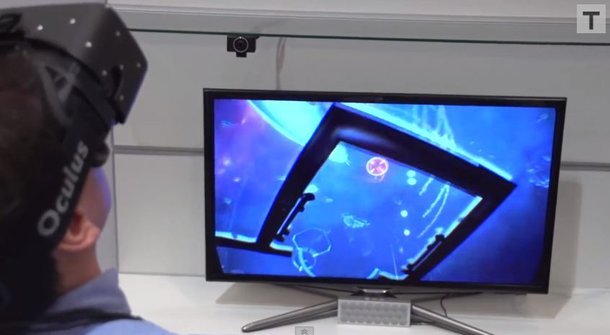Oculus Rift's Crystal Cove shows off new low-latency screen and positional head tracking

The Oculus Rift has been making waves in PC gaming for a while, but mostly absent from the buzz has been the company behind Oculus, Oculus VR. Apparently they've been saving up all that excitement for this year's CES, where they unveiled a new prototype, the Crystal Cove. Our friends at Tested got to have a long hands-on with the new prototype, and I'm not even a tiny bit bitter or jealous about that. At all.
Crystal Cove makes two big advances over the developer-focused earlier prototype: a 1080p (probably) OLED screen and built-in six-degree motion tracking. First, here's what VP of Product Nate Mitchell says is great about the new OLED screen: “In a typical LCD [screen], it's between 15 and 35 milliseconds pixel switching time,” he said, referring to the time it takes a single pixel of the screen to change colors. “With OLED technology, we have a sub-millisecond pixel switching time, that means we can get all of that pixel switching latency sucked out.” It may sound like nothing, but lag between the movement of your head and the changing of what you're seeing is a major component for motion sickness.
A sharper screen that refreshes faster is half of the VR dream, and the other half is head and motion tracking. Dev-kit hackers have already been rigging the previous prototype with motion controls that supplement the existing sensors—in Crystal Cove, IR LEDs are read by a camera to use the full motion of your head. This means leaning around corners in shooters, ducking behind boxes or, interestingly, zooming closer to the ground during a real-time strategy overhead view.
Cory has been all over CES, and we've been seeing great stuff from the convention. Check out our full CES 2014 coverage here .
Thanks, Tested .
The biggest gaming news, reviews and hardware deals
Keep up to date with the most important stories and the best deals, as picked by the PC Gamer team.

